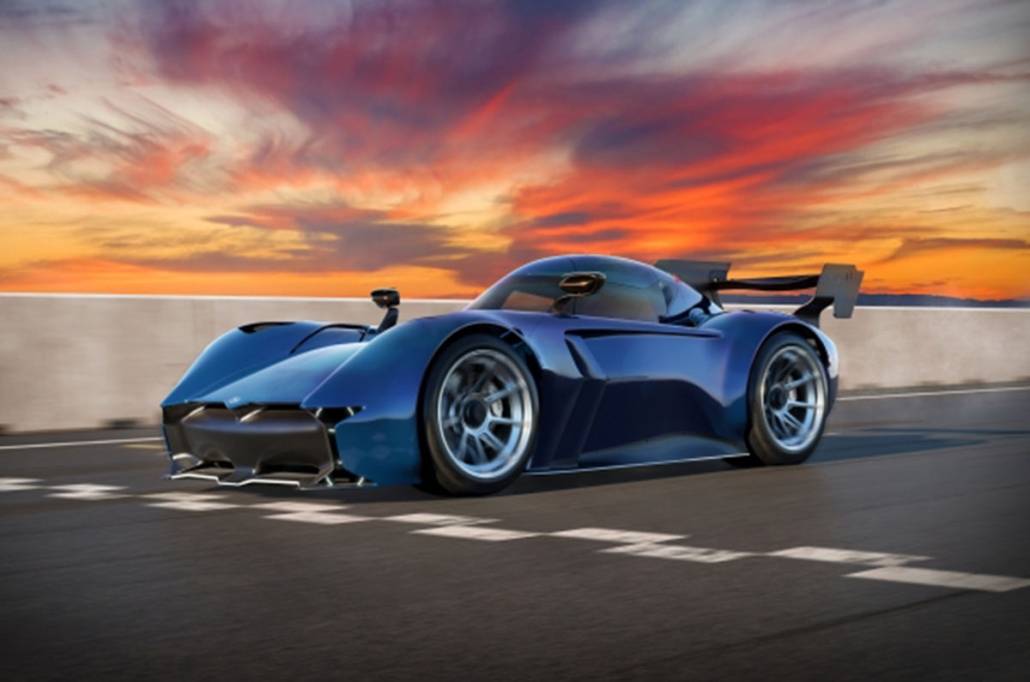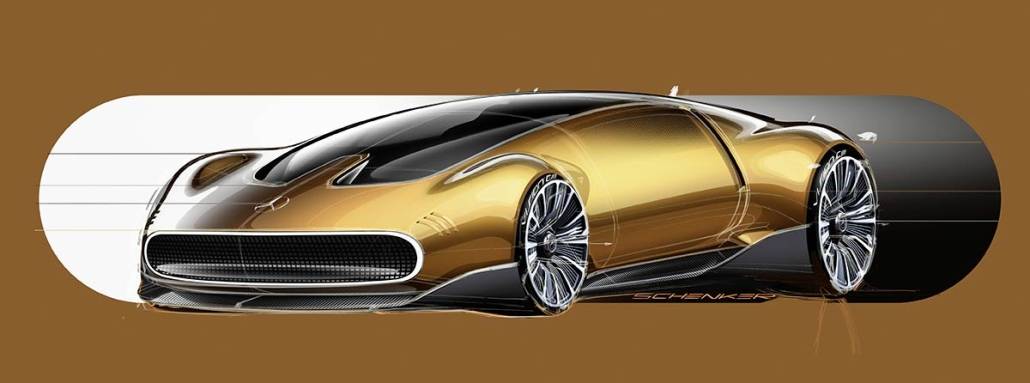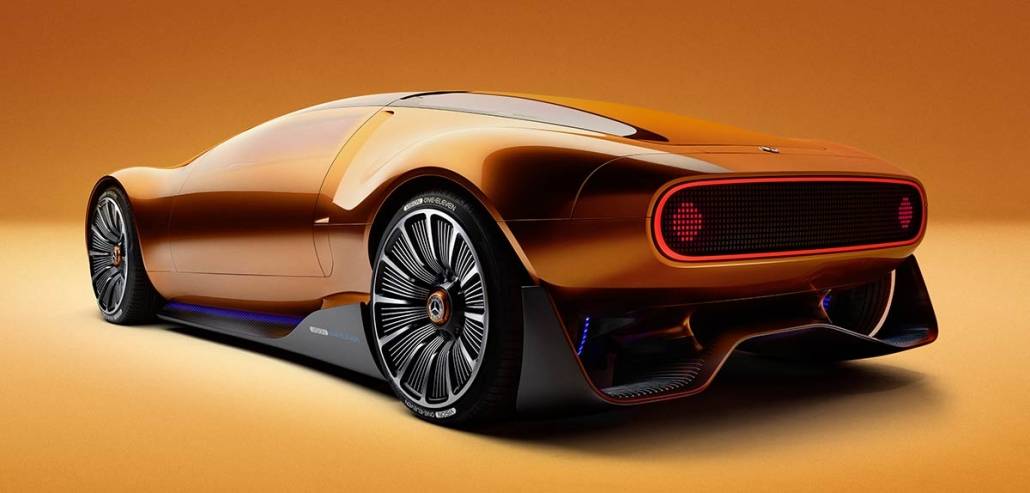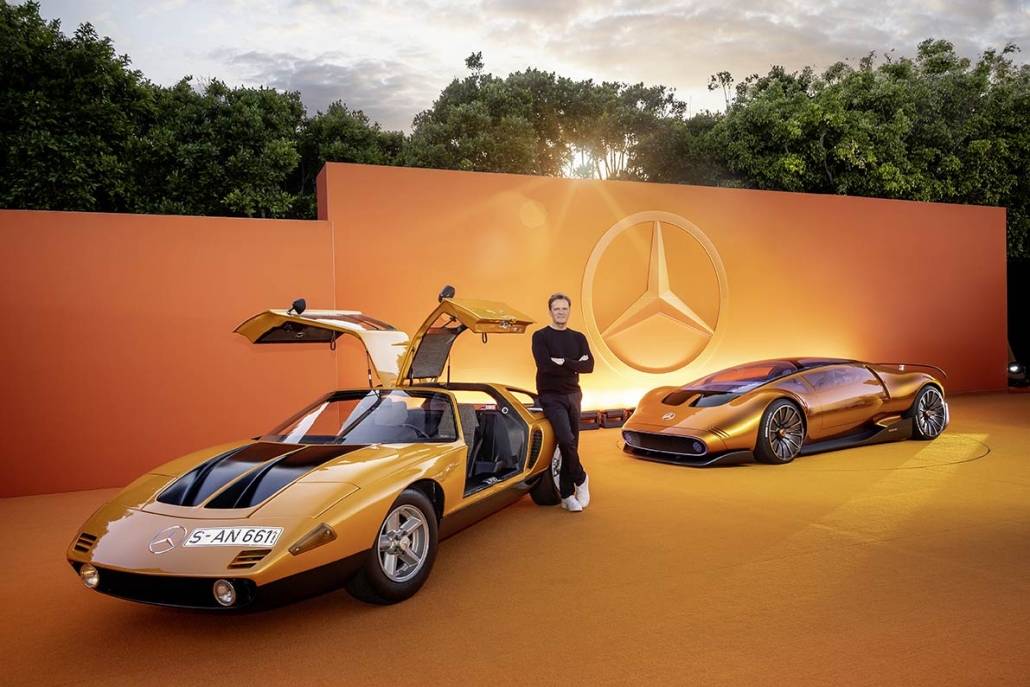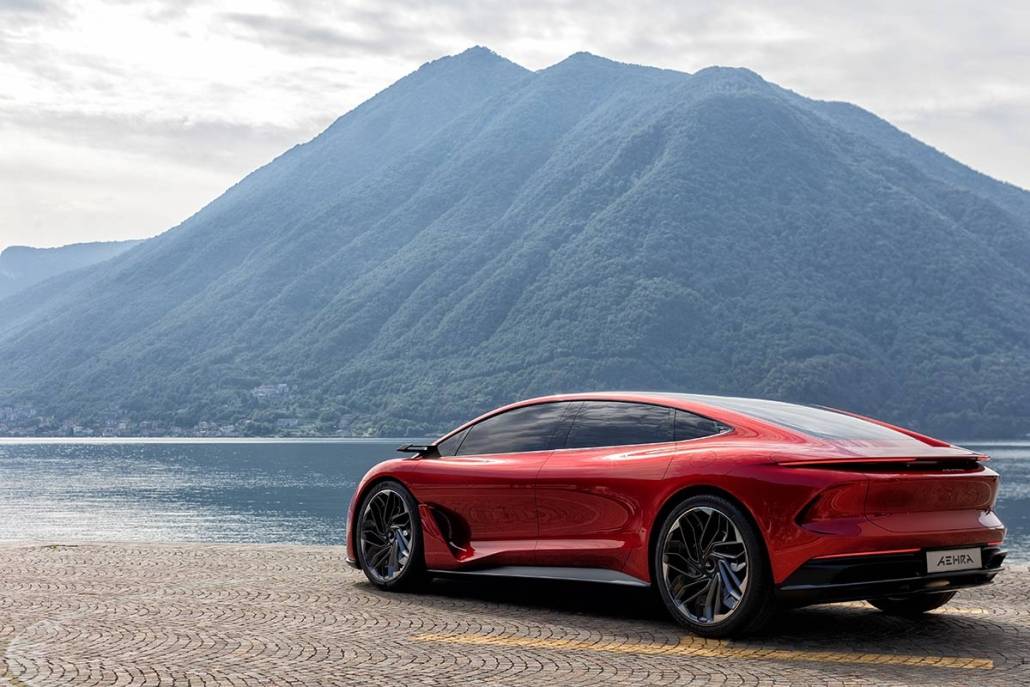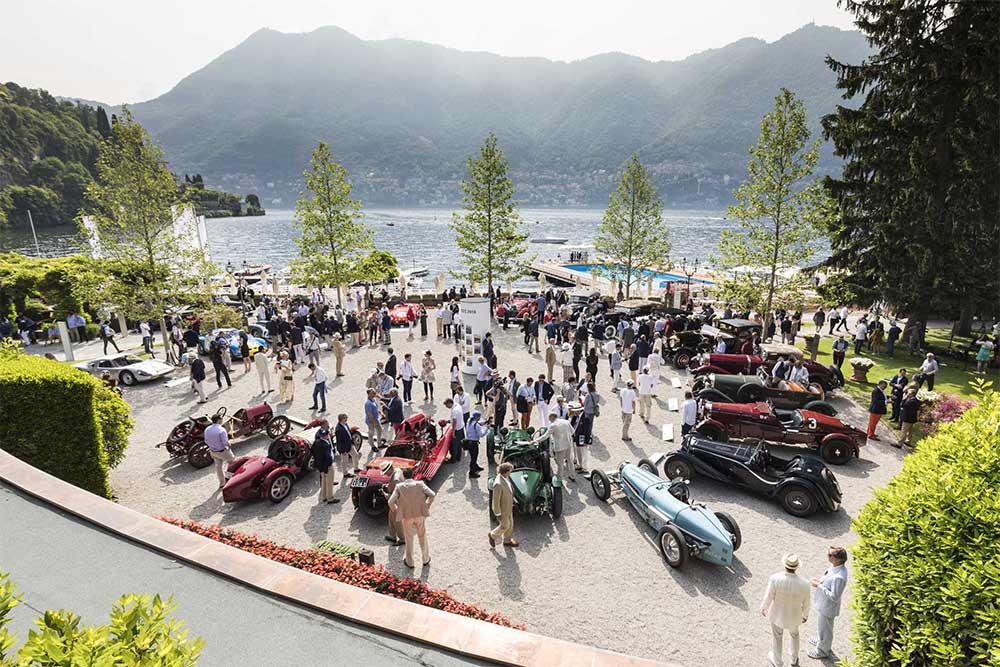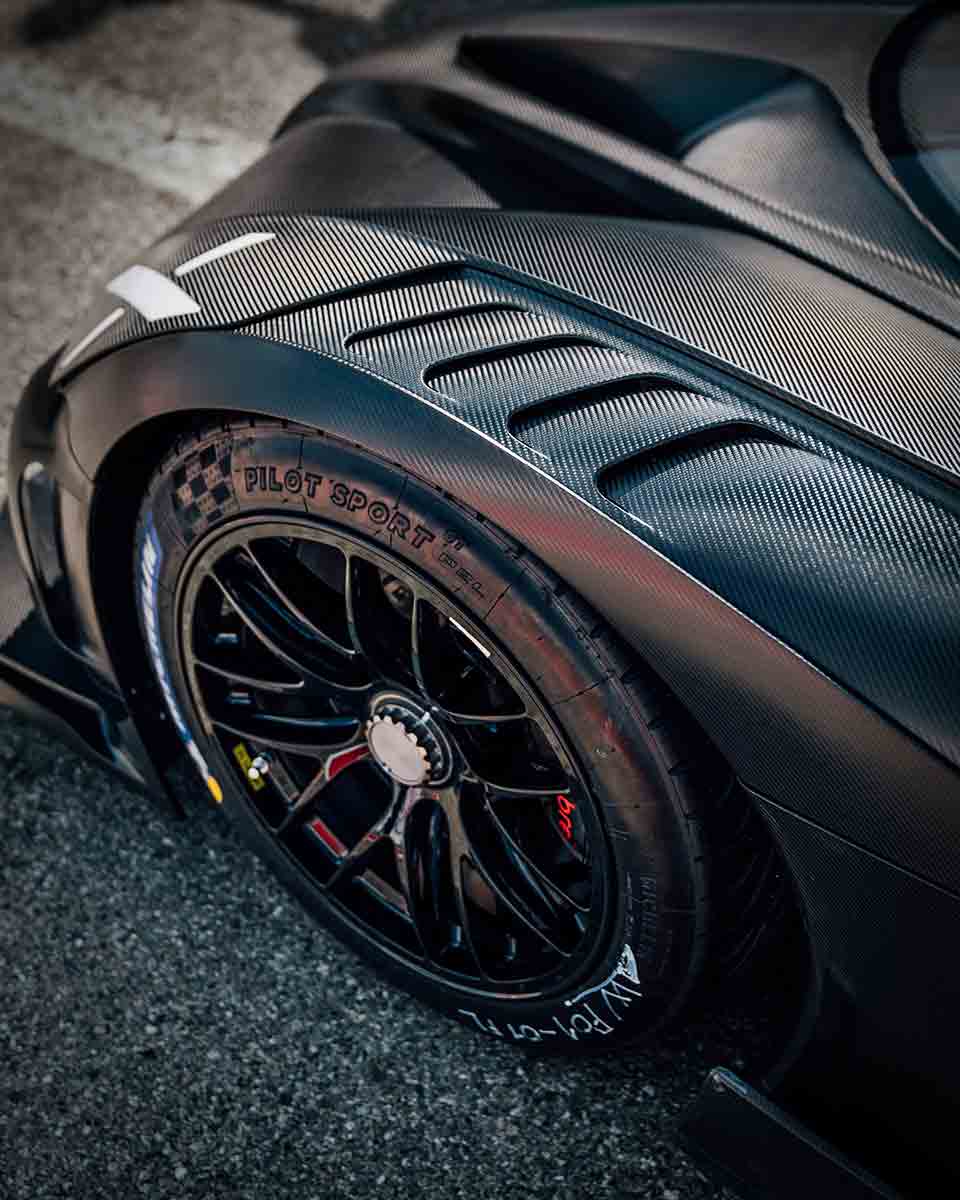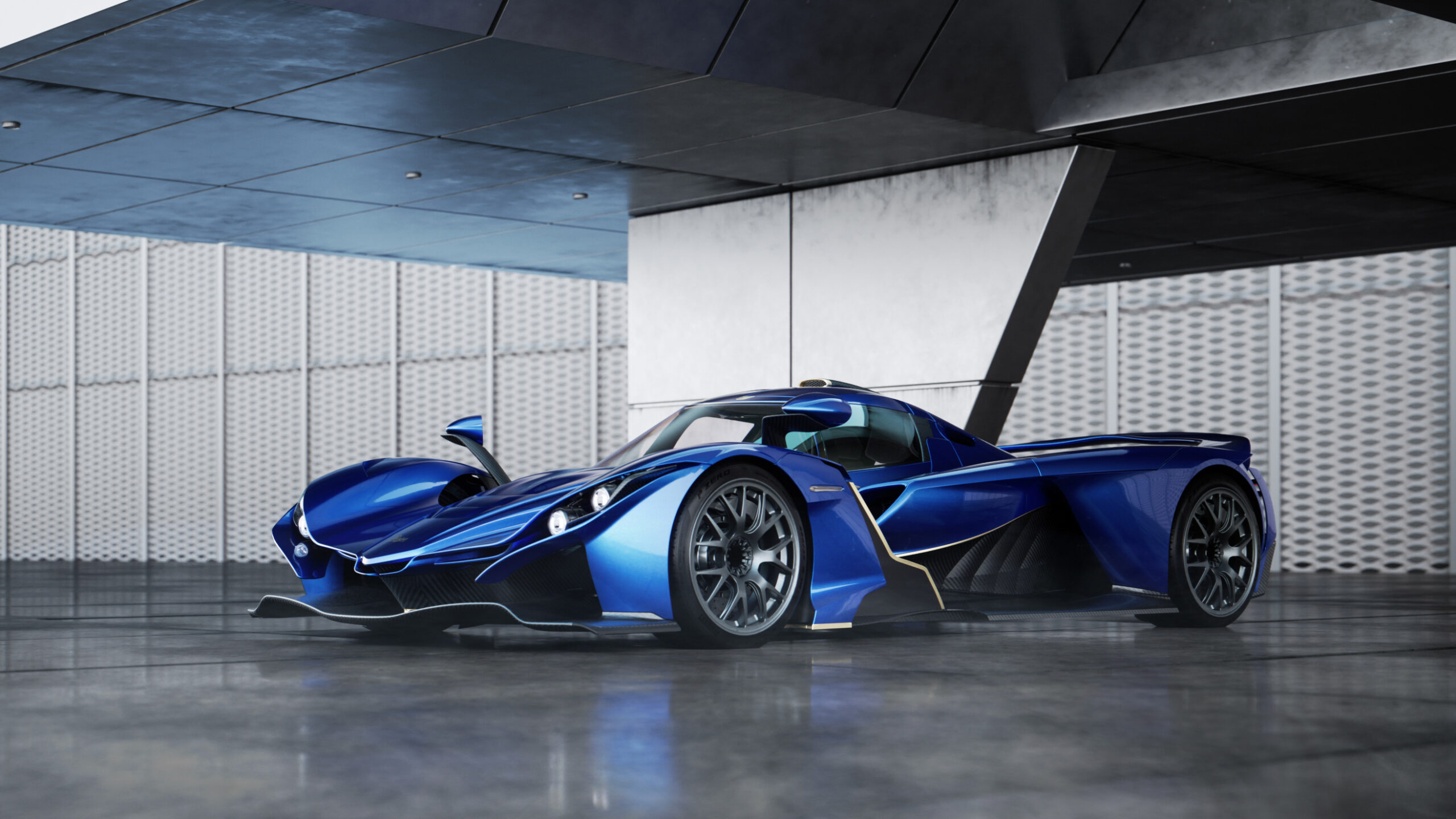An era ends: Achim Anscheidt passes the baton at BugattiBugatti Director of Design, Achim Anscheidt has retired from his role, bringing an end to 19 years of his personal oversight of the stylistic evolution of the Bugatti brand. Anscheidt will remain a senior advisor to Bugatti Rimac CEO, Mate Rimac, as the brand prepares to unveil the new hybridized Chiron successor. Achim’s long-standing deputy, Frank Heyl, becomes the new Bugatti Director of Design.Anscheidt, the son of three-time motorbike racing world champion Hans-Georg Anscheidt, started his car design career after being a motorcycle stunt acrobat until his early twenties.
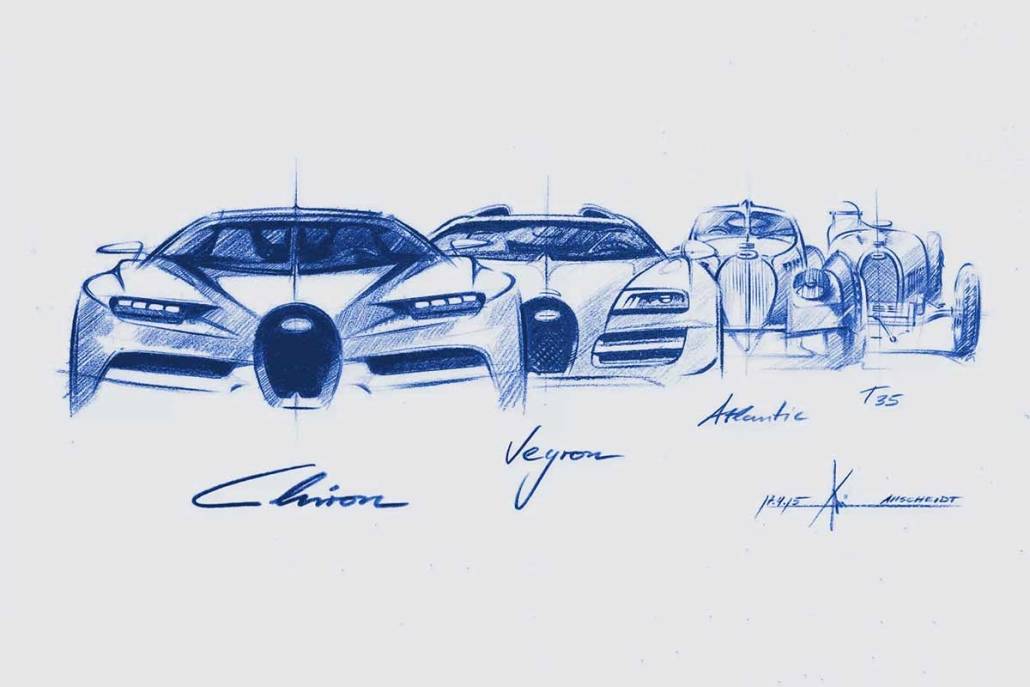
He grew up surrounded by the sounds and smells of motorsport, and had a natural talent for art and perspective drawing. Eventually he combined the two at ACCD in Pasadena, graduating in 1993 and moving into a junior designer role at Porsche Design Weissach. Three years later, he was chosen to lead the Volkswagen Group’s advanced design operations in Barcelona and Berlin at a time when Bugatti was also under VW Group ownership.In 2004 Anscheidt became Design Director at Bugatti, when the Veyron design was mostly finalized but a rapid stylistic development of the product portfolio needed to be undertaken. With Anscheidt’s guidance, models like the Veyron Grand Sport Vitesse and Veyron Super Sport became icons of performance. And with special edition models like the innovative Veyron L’Or Blanc with its porcelain applications, the Veyron Edition Hermès and the Legend Editions, Anscheidt and Bugatti pioneered new levels of bespoke craftsmanship. The brand grew in stature and in sales exponentially with Anscheidt’s collaborative influence.

Mate Rimac, Bugatti Rimac CEO said: “Since engaging in my role at Bugatti a couple of years ago, it was obvious that Achim was a crucial component in establishing the next generation of Bugatti hyper sports cars, so I sincerely encouraged him in 2021 to remain with Bugatti for a further three years before retiring. Not only has he very successfully led the stylistic development of a manufacturer renowned for some of the most beautiful cars in the world, but he has also evolved the brand into a true automotive luxury pioneer. His attention to detail and dedication to perfection extends to almost every part of Bugatti today; the visual quality perception, the consequent material philosophy, our communications with our customers and everything else in between. He has ensured that every interaction an individual has with our brand is incomparable by design.
“Achim’s understanding of the Bugatti identity, handed down from our founder Ettore and in the beautiful designs of his son Jean, is unrivalled, and his last commitment to Bugatti was to finalize the design of our next-generation hyper sports car. Without saying too much, it’s Achim’s masterpiece and the most beautiful and authentic evolution of Bugatti I could have imagined. It’s an honor to have Achim continue to develop the brand as our advisor, and with the stunning work that Frank Heyl has already undertaken, the future of Bugatti design is in the very best of hands.”
Christophe Piochon, President of Bugatti Automobiles, said: “Designing a Bugatti is a skill that only the very best can achieve. Not only do you have the enormous weight of a century of iconic automotive masterpieces on your shoulders, but you also have the complexities of millimeter-perfect packaging and extreme aerodynamic and thermodynamic requirements. To create a car around the W16 engine, and one capable of world record speeds requires a huge amount of balancing aerodynamic forces and active temperature handling. Achim has a very natural technical understanding all these demands, able to craft beauty from necessity.”
Achim Anscheidt said: “When I first arrived at Bugatti, I was inspired to make the famous Bugatti patrons of the past proud – especially Ettore Bugatti and his son Jean, but also Romano Artioli and especially Ferdinand Piëch. Jean was such a visionary of style design and for his life to have been cut so sadly short served as the catalyst for me to evolve the brand in his stylistic vision. I wanted to develop modern day Bugatti into a crowning jewel of brand perception and unique automotive excellence.
“The Veyron, the Chiron and the successor to the Chiron all share this one thing: they are not racecars for the road, they are the pinnacle of Grand Tourisme development, they are an intriguing mixture of a nimble Type 35, the luxury of the Type 41 Royale and the peerless elegance of the Type 57 SC Atlantic.
“I will be forever grateful for having been a part of this incredible developing Bugatti journey, the best is still to come, and I’m truly thankful to all who supported the brand and our design department to help us evolve the brand to a place where I know Ettore and Jean would be proud.”

THE BUGATTI DESIGN DNA
Under Achim’s careful guidance, modern day Bugatti design has evolved to spark a sense of wonder and joy into anyone that is lucky enough to discover one on a public road. Deliberately elegant, sovereign and free from overly aggressive lines, a Bugatti should evoke the same sensation as seeing a genuine and unique artwork. An automotive contrapost of beauty and beast and of utmost quality perception, visible in the refined reflections on the sculpted organic bodywork.
This is the overarching character upon spotting a Bugatti; something almost indescribable that creates a charming moment of automotive excellence with onlookers. But of course, it must also be recognizably Bugatti, and Achim has defined core elements that feature in some way in every model he has designed, including those still to be revealed.
A Bugatti has a distinct and unmistakable DNA. The horseshoe grille is the most precious brand identification symbol, as is the duotone split, used so effectively by Jean Bugatti on his Type 57 creations. The so-called ‘Bugatti Line’ creates a worldwide instantly recognizable sideview profile for every modern-day Bugatti, subtly developed over time to suit each individual Bugatti creation. And an expressive centre line, that traces from the arching crown of the horseshoe grille, across the top of the car flowing into the rear, is a subtle homage to the full-length fin, originating from the purpose-driven famous rivetline of the Type 57 SC Atlantic.
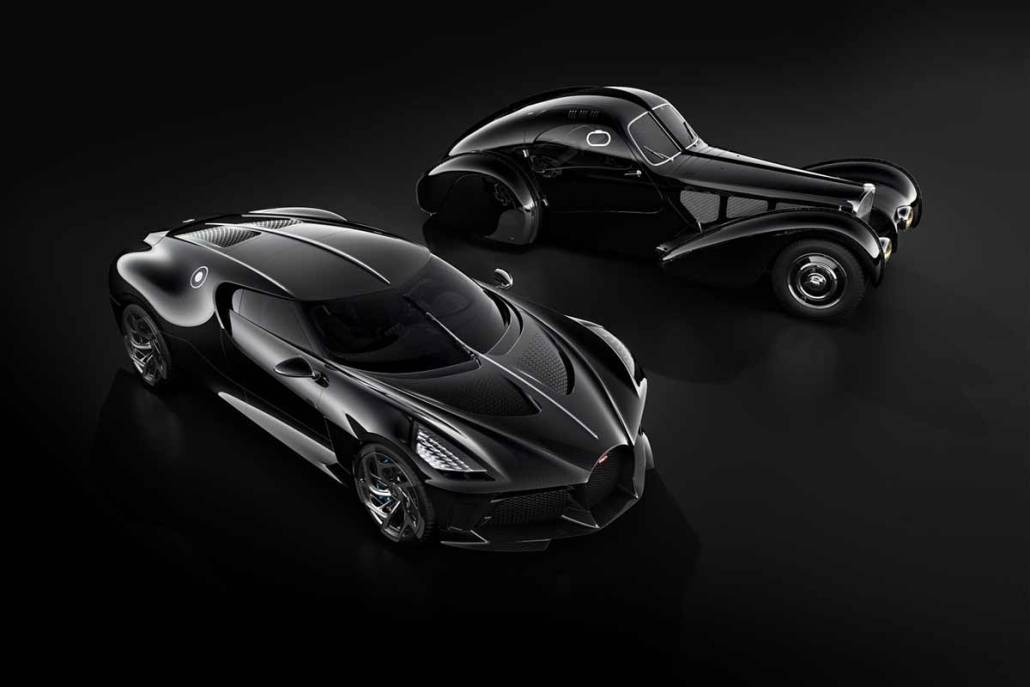
Perhaps most crucially of all, Bugatti design DNA should be ideally created in healthy correlation to its performance challenges. Achim’s philosophy has always been that a truly beautiful and authentic car design should not be engineered first then designed later. The technical requirements and the design must be developed at the same time, and that is especially the case with a Bugatti, complete with the enormously complex aerodynamic and thermodynamic requirements. A car that can travel at more than 400km/h, and with 10 separate radiators and a revolutionary 8.0-liter engine must delicately balance downforce, lift and cooling. This is a design vision developed under Achim’s leadership and known as ‘Form Follows Performance.’
Bugatti designers must have a very solid understanding about state-of-the-art automotive engineering, in order to achieve authentic stylistic ‘win–win’ solutions with Bugatti’s ambitious and talented engineers.
Much like a high-end timepiece, every part of this technical design process must be holistically beautiful. Even with the bodyshell removed, a Bugatti should be a work of art, capable of being displayed and appreciated by anyone who beholds it. It is a passionate undertaking of 360-degree beauty in engineering, from the ground-up. Just as it was with Ettore Bugatti and Jean Bugatti, every single component can standalone as an example of design excellence – “Nothing is too beautiful,” as he famously said.

BESPOKE AND THE COACHBUILDING RENAISSANCE
It has always been a part of Bugatti history that cars can perfectly reflect their owner’s exact desires. And even from the early days of the Veyron, Achim worked to push the boundaries of quality perception, precious materials and excellence in craftsmanship to create extraordinary one-off or few-off masterpieces.
This era of individualization began with the Veyron Pur Sang – a favorite of Achim’s as the first of its kind, but also for its pure and authentic materiality. Essentially an unpainted Veyron – with a visible carbon fiber monocoque and pure polished aluminum – it was a visual representation of Bugatti’s dedication to authenticity in materials. If something looks like carbon fiber, or titanium, or leather or aluminum, then it always is. Achim calls this: ‘What you see is what you get.’
In collaboration with famous brands and organizations, Achim oversaw projects that would push the limits further still. The Veyron 16.4 Grand Sport L’Or Blanc featured porcelain highlights as part of a design that mimicked the light reflections over the exterior body. The Veyron FBG Par Hermès was created in partnership with one of the world’s most famous luxury houses, featuring bespoke exterior touches and numerous interior additions, designed from scratch in the Hermès workshops in Paris.
With the evolution from Veyron to Chiron1, Achim’s design team pioneered a resurgence of the coachbuilding tradition that produced some of the most beautiful Bugatti cars ever to have existed. The modern-day coachbuilding era of Bugatti, all using variants of the Chiron powertrain and chassis, has led to the creation of design icons like Divo2, Centodieci3, the unique La Voiture Noire4, the Bolide5, the Mistral6.

BUGATTI UNSEEN
Although much of Achim’s design work is available for the world to see, a huge amount remains hidden. But designs and ideas are constantly reassessed, able to be reinterpreted in a timeless way for the modern era.
At many points in his career, Achim explored a second model line for Bugatti. In 2009, the Galibier – a four-seat Grand Tourisme – was revealed as a potential future model to join the Veyron. And then in 2015, a design for a V8-powered coupé in the style of the legendary Type 57 SC Atlantic was publicly featured. Neither made it to production, but it remains Achim’s wish that new model lines can still be created in the spirit of Jean Bugatti.

Famously, Jean Bugatti’s Type 57 generated many different coachbuilt body styles, including the four-seat Ventoux, the sweeping two-seater Atalante, the iconic Atlantic and convertible Tourer variants.
IN ORDER TO LOOK FORWARD, YOU MUST LOOK BACK
With an envious back-catalogue of revered automotive designs, Achim’s challenge for modern Bugatti design has been to capture the essence of what made those cars so timelessly elegant, without creating a retro pastiche.
It’s important to understand what the nucleus of the Type 35 is, or what the defining characteristics of the Type 57 SC Atlantic are. Only with a true understanding of these designs is it possible to design something that doesn’t mimic them, but recaptures their beauty for an entirely new era of cultural development and brand value.
A Bugatti would never directly copy, for example, the riveted body panels of the Type 57 SC Atlantic, but it would find inspiration in their purpose. The rivets were a functional performance decision for the Atlantic, beautiful because of their innate sense of purpose. In modern-day Bugatti, this ethos continues.
Much of this stems from the history of Bugatti as a brand born from a family of artists, and a brand with family values, with a passion for racing and a dedication to perfection. Today, these values continue to inspire Achim, instilled into every member of the design team and hard-wired into every Bugatti design. These are the foundations on which the next chapter in Bugatti design will be built.

PASSING THE TORCH
Achim now passes the torch of Bugatti design to Frank Heyl, having overseen the meticulous development of the Chiron successor and further products. His vision for the future of Bugatti – developed with Mate Rimac – is in place until around 2030. So passionate is Achim, that only with complete confidence in having secured a bright future for the brand, is he able to step back from his role. The successor to the Chiron has been undergoing its design process for over two years already and will be revealed only in 2024 before its launch in 2026.
With the imminent design future of Bugatti secured under his leadership, Achim can confidently hand over the reins to his long-time deputy Frank Heyl. The 44-year-old graduated in vehicle design from the Royal College of Art in London and worked at various manufacturers before kickstarting his career at Bugatti in 2008. At Bugatti he was involved in the design of vehicles including the Veyron Supersport, Vision Gran Turismo, Chiron and Divo. He was appointed Head of Exterior Design in 2014 and promoted to Deputy Design Director in 2019. Frank will lead the Bugatti design team, working hand-in-hand with the Bugatti Rimac design and engineering facility in Berlin, which is overseen by Jan Schmid and the Zagreb operation, headed by Ignacio Martinez.







